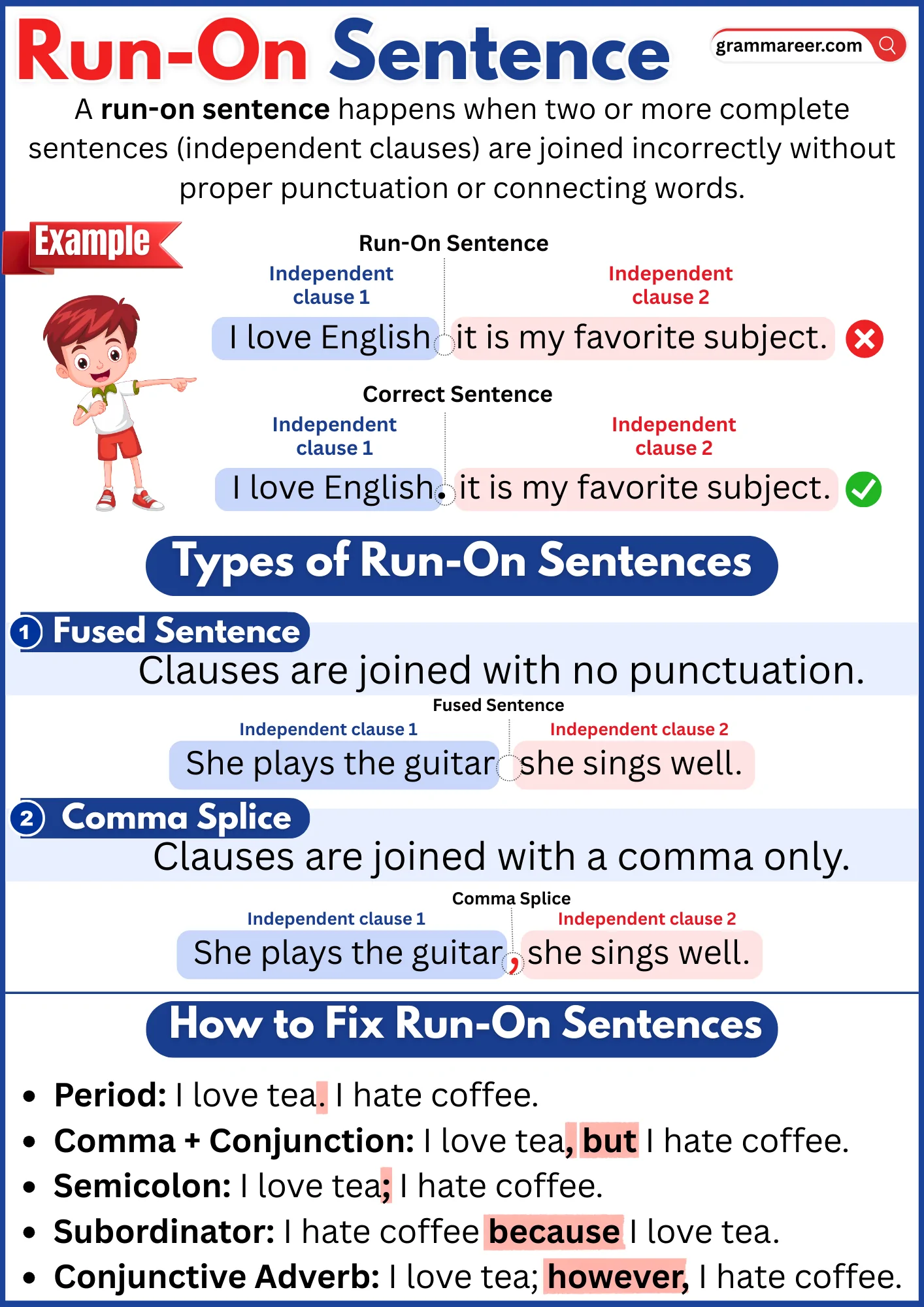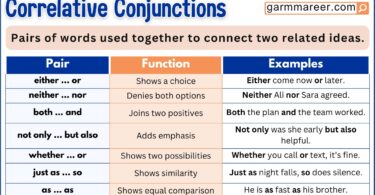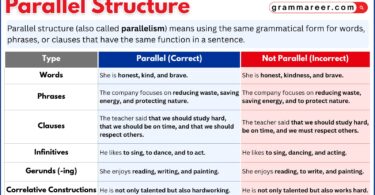A run-on sentence happens when two complete thoughts are joined without the right punctuation or connecting words. This makes the sentence confusing and hard to follow. The good news is that run-on sentences are simple to recognize and fix once you understand how they work. This article explains what run-on sentences are, shows clear examples, and shares easy ways to avoid them in your writing.
Table of Contents
What is a Run-on Sentence?
A run-on sentence happens when two complete thoughts (independent clauses) are joined together without the right punctuation or linking words. In other words, the ideas are “running into” each other without a clear break.
For example:
- ❌ I love reading I don’t have much time.
This feels confusing because there’s no pause between the two thoughts. To fix it out, you can use a period, a semicolon, or a conjunction with a comma:
- ✅ I love reading. I don’t have much time.
- ✅ I love reading, but I don’t have much time.
- ✅ I love reading; I don’t have much time.
Did you notice? that a run-on sentence isn’t just about being long. Even short sentences can be run-ons if they’re not joined correctly. What really matters is whether the clauses are connected in a grammatically correct way.

How to Fix Run-on Sentences?
Fixing run-on sentences is actually pretty simple. Since the problem comes from putting two complete thoughts together without the right punctuation, the solution is just to connect them properly. Here are three easy ways:
1. Break it into two sentences:
Sometimes the simplest fix is to split the ideas into separate sentences.
- ❌ She loves cooking she doesn’t like washing dishes.
- ✅ She loves cooking. She doesn’t like washing dishes.
2. Add a comma with a conjunction:
Conjunctions like and, but, so, or, yet join ideas smoothly. Just put a comma before the conjunction.
- ✅ She loves cooking, but she doesn’t like washing dishes.
3. Use a semicolon:
A semicolon works best when the ideas are closely related. It creates a stronger pause than a comma but keeps the thoughts in one sentence.
- ✅ She loves cooking; she doesn’t like washing dishes.
That’s really all there is to it. If you give each complete idea its own space whether with a period, a conjunction, or a semicolon you’ll avoid run-on sentences and make your writing much clearer.
Types of Run-on Sentences
Not all run-on sentences look the same. They usually fall into two common types:
1. Fused Sentences
This happens when two complete sentences are joined together with no punctuation at all. The ideas just crash into each other.
- ❌ I finished my homework I went outside to play.
- ✅ I finished my homework. I went outside to play.
2. Comma Splices
This is when two sentences are joined with only a comma, which isn’t strong enough to hold them together.
- ❌ It was raining, we stayed inside.
- ✅ It was raining, so we stayed inside.
- ✅ It was raining; we stayed inside.
That’s really it. Run-on sentences are usually either missing punctuation completely (fused) or using the wrong punctuation (comma splice). Once you spot the problem, fixing them becomes super easy.
Examples of Run-on Sentences
Here are some sentences that run together without proper punctuation, along with smoother versions:
- ❌ I woke up late I missed the bus.
- ✅ I woke up late, so I missed the bus.
- ❌ The movie was interesting, the ending was disappointing.
- ✅ The movie was interesting, but the ending was disappointing.
- ❌ She enjoys reading she doesn’t like writing.
- ✅ She enjoys reading, but she doesn’t like writing.
- ❌ We went to the market it started raining.
- ✅ We went to the market, and then it started raining.
- ❌ He studied all night he was still tired in the morning.
- ✅ He studied all night; he was still tired in the morning.
These examples show how ideas can get jumbled if they aren’t connected properly. Once you add the right punctuation or linking words, the sentences immediately become clear and easy to read.
Why Fixing Run-on Sentences Is Important?
You might wonder, “Why should I care about run-on sentences?” The answer is simple: they make your writing hard to read. Even if your ideas are good, run-ons can confuse the reader and make your sentences feel messy. The good news is that avoiding them is easier than you think.
Here are a couple of tips that really help:
Tip 1: Keep one idea per sentence
Every sentence should clearly express one complete thought. If you try to squeeze too many ideas into one, it often turns into a run-on.
- ❌ I love coffee it helps me stay awake.
- ✅ I love coffee. It helps me stay awake.
Think of a sentence as giving your reader a pause. Let one idea finish before starting the next.
Tip 2: Use punctuation wisely
Periods aren’t your only option. Depending on how your ideas relate, you can use different punctuation marks to keep things clear and smooth.
- Semicolon: A gentle break that links two related thoughts.
✅ I enjoy reading; it helps me relax. - Dash: Great for adding a dramatic pause or extra detail.
✅ She was late – again. - Ellipsis: Works when you want to show a pause or unfinished thought.
✅ I was going to say something… but never mind. - Colon: Useful when the second part explains or expands on the first.
✅ He has one true passion: music.
Using the right punctuation not only prevents run-ons but also gives your writing rhythm and variety.
FAQs
A run-on sentence happens when two or more complete ideas are joined together without proper punctuation or connecting words. It makes writing confusing.
Example: ❌ I love reading I don’t have much time.
✅ I love reading. I don’t have much time.
If a sentence feels “jammed together” or confusing, it might be a run-on. Check if it has more than one complete idea without correct punctuation or a linking word.
Example: ❌ She went to the store she forgot her wallet.
✅ She went to the store, but she forgot her wallet.
Not at all. Even short sentences can be run-ons if two complete ideas are joined without proper punctuation. It’s not about length—it’s about how the clauses are connected.
Run-ons make your writing hard to read and can confuse the reader. Fixing them makes your ideas clearer, your writing smoother, and your message easier to understand.
You May Also Like




